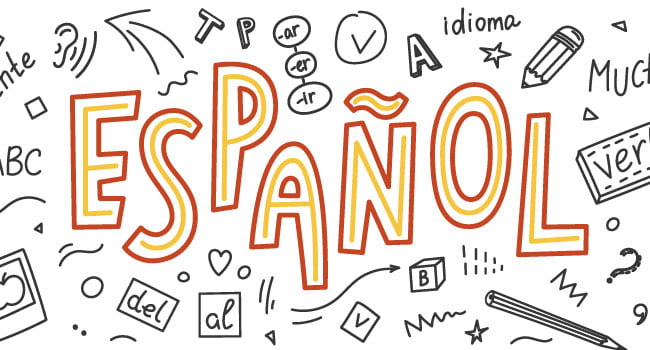Spanish Translation Quality Assurance Steps
Spanish is one of the most spoken languages in the world, with more than 530 million speakers. It’s also the official language of 40 countries and key international organizations. In recent years, the demand for translations of all types of assets has increased exponentially, and Spanish is one of the top languages.
Having a well-defined quality control methodology is as important as the translation itself. Many freelance translators commit the big mistake of delivering their files without a proper revision, which might cause serious issues with clients.
At GPI, an ISO 1700 certified company, we put special emphasis on translation quality assurance, because we understand that a translation will never be complete without a thorough review.
To guarantee high quality translation services for Spanish and all languages, we provide a 3-step-service of translation, editing and proofreading. This process ensures that the final product not only meets the client’s expectations but exceeds them.
A Quality Assurance Process in Spanish and All Languages?
 Quality control is a set of procedures that guarantees adherence to the quality norms and the client’s requirements. A professional translator will never neglect this stage in the translation process, because thinking that a translation is perfect just by finishing it is simply unrealistic. Furthermore, some clients might provide poorly written source content that the translator could misinterpret from the very beginning.
Quality control is a set of procedures that guarantees adherence to the quality norms and the client’s requirements. A professional translator will never neglect this stage in the translation process, because thinking that a translation is perfect just by finishing it is simply unrealistic. Furthermore, some clients might provide poorly written source content that the translator could misinterpret from the very beginning.
Therefore, reading the original text more than once is a good practice to ensure a complete result.
It’s also important for a translation company to create and implement an efficient quality control program, which will be determined by the most important standards that their services must accomplish.
For example, if the content is about machines that people will operate, the translation should not leave room for any confusion that might result in endangering an operator’s life. If you’re translating medical content, you must be extremely careful with the use of instructions and safety measures.
In a certain way, quality control is a translation’s soul, because, without it, the final goal would not be achieved.
How Can You Create and Follow a Thorough Translation Quality Control Process?
A professional translation company will always count on a quality control methodology to ensure continuous quality control to their clients and adapting such methodologies based on the different issues that might come up.
In this blog, we’ll share some of our tips to guarantee an effective quality control process.
#1 Understand the Client’s Needs and Instructions
Every client is different, and any professional translation company should be able to adapt to those needs. Did the client confirm or provide a specific set of terms to be used throughout the project? Did the client specify the file format to use? Did the client request an NDA to safeguard confidentiality and secure data transfer? If any of these answers are yes, all of these requirements should be respected and implemented as part of a good translation quality control.
#2 Revise the Translation’s Content
A translation should be revised to ensure that the final translated content matches the content that was in the original scope.
For example, in technical translations, some of most common mistakes are related to mistranslating a machine button (e.g., “ON” translated as “OFF” – In Spanish, “Prender” versus “Apagar”), inconsistently using numbering compared to the source file or using inconsistent terminology when referring to the same functions and features. All these factors may lead to the incorrect use of a machine due to poor quality controls.
#3 Perform a Linguistic Review
Linguistic mistakes should be fixed during the quality control, since they may deviate from the original meaning. As mentioned previously, the objective of quality control process is to ensure that the product or service works in the target market and for the target audience. Incorrect grammar, orthography mistakes, and inaccurate terminology use will impede this goal.
#4 Test the Files
All translators have faced issues related to a file’s format at one time or another. Sometimes, when working with Microsoft Office software, translators experience problems due to compatibility issues.
Also, if a file has hidden text, you might have difficulties when exporting the translation. You should fix these kinds of errors in the pre-engineering stage before assigning a file to a translator. It will make the translation process easier and ensure a good final outcome for the client.
#5 Print the Translation if Necessary
This step might be useful when dealing with right-to-left languages, such as Hebrew and Arabic. If the client does not speak the target language and the translation will be published, it might be useful to review the printed file.
And even if the translation is excellent from a linguistic point of view, a professional translation company will offer its clients desktop publishing (DTP) services to ensure that the final format and layout match the native content.
#6 Use Quality Control Checklists
 All professional translation companies have defined procedures as part of their quality control strategies, which constitute their business philosophy.
All professional translation companies have defined procedures as part of their quality control strategies, which constitute their business philosophy.
To guarantee that those procedures are being followed, many companies rely on the use of checklists with all the detailed steps to be used when validating the final quality.
#7 Provide Traceability
You should not delete files from your local server, and you should document all of the translation steps.
If you can provide traceability, you’ll bring professionalism to your services and you’ll be more efficient when troubleshooting. You should have immediate access to all dates, files, names, and all details related to the project to solve any issues that the client may have.
Conclusion
A good translation quality control is not just an additional step in a project—it’s inherent to the translation process. Not having this type of translation quality assurance process for Spanish and all languages might have serious consequences. That’s why at GPI, all translation projects undergo strict quality control procedures before finalizing projects.
